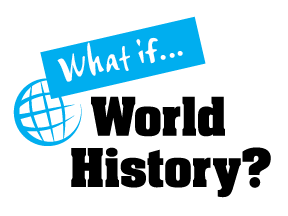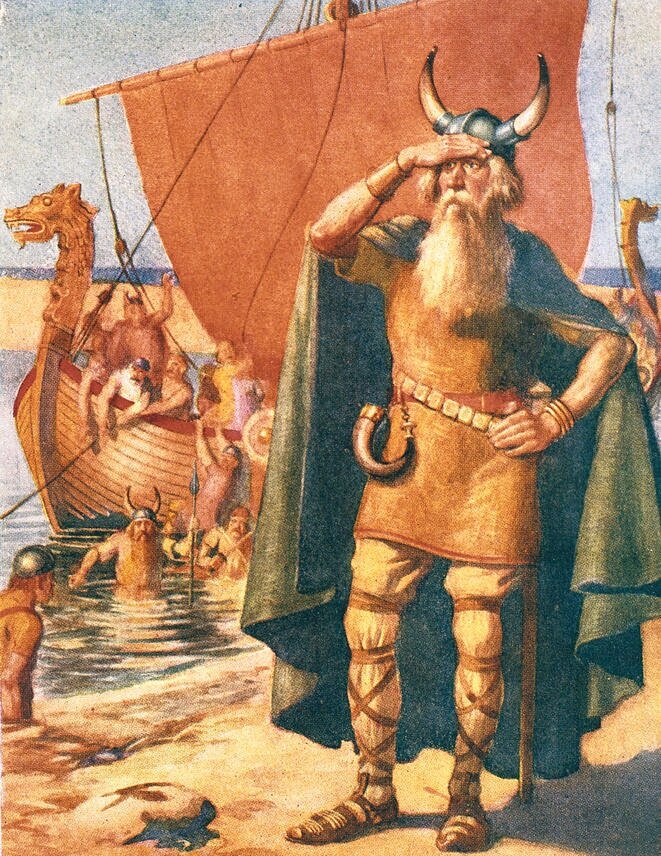Vinland’s Demise
The Little Ice Age
With better weather than Greenland, more abundant food, and timber resources, it’s hard to imagine why the Norse didn’t stay and find greater success in Vinland. The answer comes down to two simple reasons: the natives didn’t want them there, and there were never enough settlers to develop any significant presence to keep hostile tribes at bay. Despite the technological superiority of their weapons, tools, and boats, there were simply too many warlike Skraelings to sustain a long-term settlement.
Keep in mind, there were only about 2,500 Norse in Greenland at the time, so the pool of available nearby colonists was small. In addition, the weather became significantly colder globally in a period known as the Little Ice Age.
According to Linden in Smithsonian magazine: “The great sailing trips of Leif and Thorfinn took place in the first half of the 11th century, during a climatic period in the North Atlantic called the Medieval Warming. It was a time of long, warm summers and scarce sea ice.
Beginning in the 12th century, however, the weather started to deteriorate with the start of the Little Ice Age. Tom McGovern, an archaeologist at Hunter College in New York City, has spent more than 20 years reconstructing the demise of a Norse settlement on Greenland. McGovern says the Norse ate their livestock and dogs before turning to whatever else they could find in their final winter there. The settlers might have survived if they had mimicked the Inuit, who hunted ringed seals in the winter and prospered during the Little Ice Age.
Between 1275 and 1300 summers in the North Atlantic were much cooler and winters longer and harsher. Starting around 1300 through the 17th century, ocean-going travel was significantly hampered. Sea and pack ice advanced aggressively southwards and glaciers grew in Greenland. Harbors became closed to shipping and trade.
Vikings who settled on the European continent and England also were facing harsh, ongoing winter weather that would have kept them from migrating to Western lands across the sea. Lands they may have been familiar with from sagas told around longhouse hearths and feasting tables. But Europe was in the icy grips of climate change so mass cross-Atlantic migration was not possible at the time.
The Baltic Sea froze twice in the early 1300s, villages in the Swiss Alps were destroyed by creeping glaciers, and rivers were frozen from Great Britain to the Netherlands. Famine, hypothermia, and bread riots became common over the next three hundred years.
In Greenland and Northern Canada, the icy grip of winter peaked between 1430 and 1455 when the Norse in North America essentially abandoned their settlements from lack of support. The large settlement in Iceland lost thousands of settlers to migration, and lack of food and shelter.
The weather had sealed the fate of Vinland and the settlement of North America. It won’t be until the 16th century that seafaring nations take a greater interest in the New World and cross-Atlantic migration would gain any momentum.
Paleo-Indian Life
The hostile natives were another reason for the demise of the Norse settlements. Let’s take a quick side journey away from Europeans and look at the ecosystem that the Paleo-Indians have created in North America during the preceding centuries. It’s a way of life they will defend aggressively, and fiercely, for the next 1,000 years against the intrusion and influence of the Norse, Spaniards, French, Dutch, Portuguese, and English.
Vine Deloria Junior writes in his book “Red Earth White Lies”: “Numerous Paleoindian cultures occupied North America, with some arrayed around the Great Plains and Great Lakes of the modern United States and Canada, as well as adjacent areas to the West and Southwest. According to the oral histories of many of the indigenous peoples of the Americas, they have been living on this continent since their genesis, described by a wide range of traditional creation stories.”
The tribes along the Great Lakes and Atlantic Coast thrived and fought each other for centuries leading up to the introduction of Vikings, and eventually, Europeans. They were well trained in making weapons of sharp stone, and later, copper. While mostly nomadic hunter-gatherers, these tribes supported their migratory meat and fish diets with nuts, berries, and wild grains harvested semi-annually from the surrounding woodlands and coastline.
The Vikings would have difficulty establishing a large European settlement because the technological advantage was significant but not overwhelming, compared to their manpower disadvantage. The Vikings might have had weapons made from iron, but they still had to largely fight hand-to-hand with hostile Skraelings. When the Europeans arrived, they had the advantage of metal armor, gunpowder, muskets, and cannon.
Unlike Europeans who settled in the 15th century onward, Vikings did not live in fort-protected villages that could be easily defended by a determined, smaller group of armed colonists. A typical Viking settlement had low, sod walls that were meant to delineate property and keep animals in fields. They were not meant for defense.
So the Vikings could win set battles but would be badly disadvantaged during sustained guerilla-like warfare that the natives would wage over the long term. Most people don’t realize that the success of European colonies was based on sustained support, in terms of arms, people, and supplies from kings and corporations like the Dutch West India Company.
Norse kings were not interested in distant settlements that needed constant aid that delivered little to nothing in return back to the crown. After a time, even the Catholic church gave up on early settlements in Greenland, and probably North America.
The natives were eager traders and short-tempered warriors. The colored cloth fabrics of the Vikings would be especially attractive barter items, and iron tools or weapons would be highly prized. Differentiating themselves in appearance and technological superiority over neighboring tribes would be of the utmost importance to the trading natives.
In exchange for ongoing access to land or hunting rights, the Norse would have had to trade much more expansively than they did during the early part of their settlements. Iron weapons, tools, and perhaps even boat-building techniques would have to be offered to entice the locals to part with their ancestral lands.
With thousands of native Americans for each man, woman, or child settler, trade relations and careful diplomacy among the warring tribes would be the key to long-term success. It would take hundreds of years, and thousands of dangerous boat trips before the Norse built up any population that would rival the numbers of local tribes.
Episode 2: Vikings in North America
To re-imagine Norse exploration of North America check out Episode 2: Vikings in Vinland. We look at what caused the demise of Norse settlements and how they could have been successful.
Our podcast envisions a different American history, and we walk the streets of a bustling Norse city on the shores of what will become New York City. All of this, 200 hundred years before Christopher Columbus.




